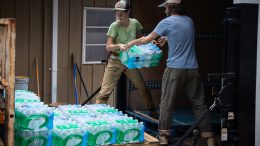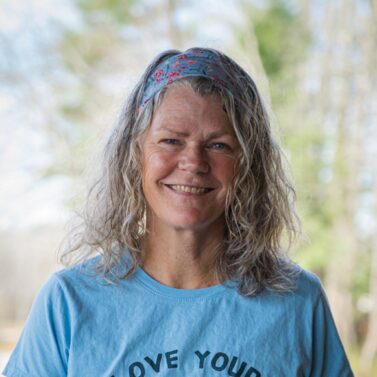“We need ten people on flush crew, five to clean out the fridges in the science building, and 15 to clear trees on the roads! We’re gonna do this together!”
This wasn’t a pep rally or a community service event. It was the morning meeting called at 9:30 a.m. each day by campus leaders in front of the cafeteria at the small college where I now live without power or water, after the climate disaster of Hurricane Helene devastated our community in western North Carolina.
“We know the Swannanoa Valley has been hit especially hard,” the college president told the group of students and employees. “And we are here for this college and for the greater community. This is our work together.”
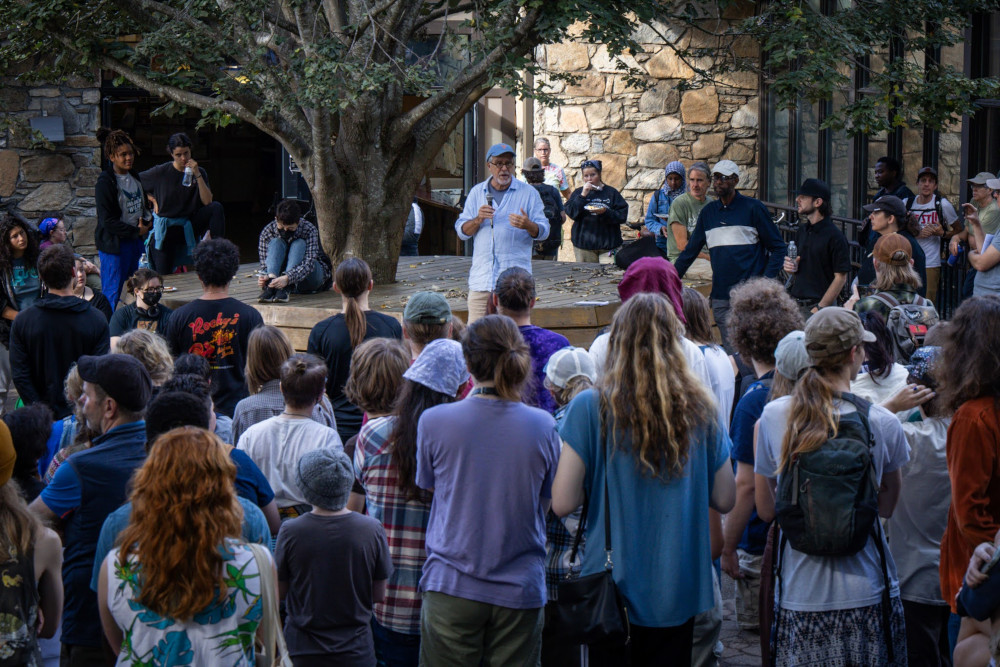
That day I joined my neighbor Tom Lam chain-sawing his way across campus with a crew of students clearing brush along the way.
“Now gather ‘round so you can see how to sharpen this chainsaw,” Tom said in his booming Jersey voice, pulling on his suspenders after we’d cleared trees crushing a neighbor’s car.
I’ve spent 25 years teaching environmental education, raising two daughters, and living at this 1,000-acre campus where all students work in jobs in places like the farm, garden, forests, and even fiber arts. And I think this might be one model of how to live in community in a climate emergency.
I wake each morning worried and wondering about the hundreds washed away by a river I can see from my small rental duplex — and those who have died from Milton miles away as well.
I first realized the extent of “Katrina in the mountains” three days after the storm, when my youngest daughter, 18, called at midnight from her college two hours away. Both my grown children had been trying to connect since the storm hit land and the waters changed our lives in this small town of Swannanoa, a ten-minute drive from Asheville.
“Mom, they’re pulling bodies out of the river,” she texted. “It’s all over TikTok. My friend’s aunt and uncle drowned. Bodies are in trees. They say the air smells like death.”
How do you comfort a young adult who has watched online as water raged through this mountainous region once billed as a “climate haven”? This is not the Gulf Coast of Alabama where I grew up, where my mother needlepointed a hurricane tracking chart and hung it on the bright yellow kitchen wall. During the pandemic, people from California and Florida flocked to Western North Carolina to escape the wildfires or hurricanes of their own climate realities.
Since the storm hit, I’ve worked with students and staff at Warren Wilson College who are like family, giving out water bottles, preparing meals, washing the solar-powered golf carts. One day my best friend and I cleaned out food from fridges in empty dorm rooms.
After working another day, I went down to the garden where students were harvesting sweet potatoes as well as the dead carp flung into the beds from the nearby Swannanoa River. “We have to get these sweet potatoes out or they’ll go bad,” they said. We later learned it was unsafe to eat any of the produce from the garden.
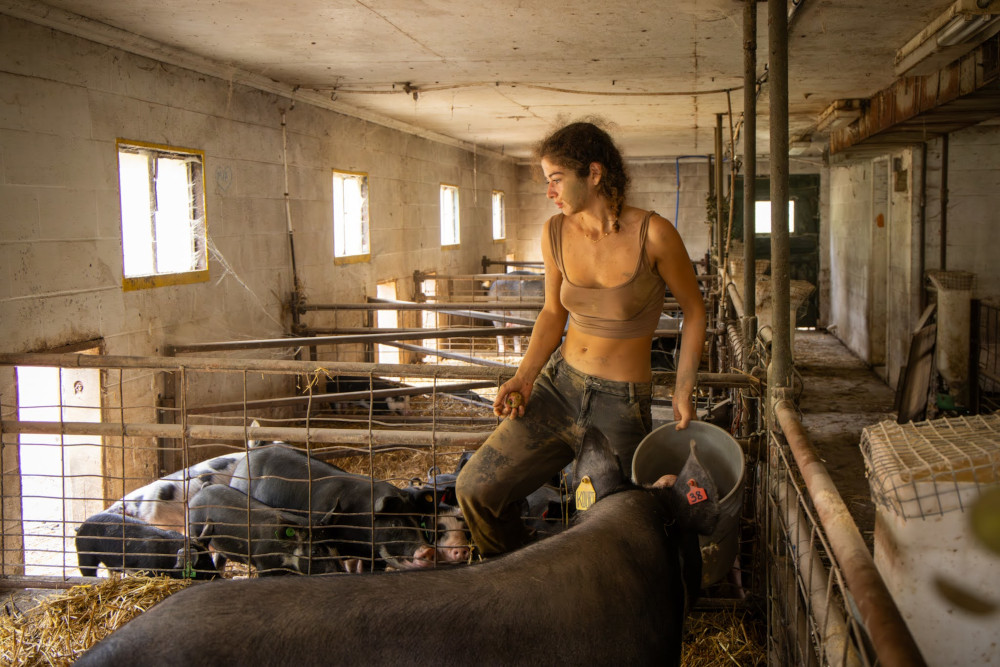
Other students on the farm crew rescued pigs who’d been carried off by the river, although they couldn’t get them all. My neighbor spotted a missing pig on an Instagram post, and students rescued it and brought the pig home to applause.
With deep heartache, we also saw rescue workers retrieve human bodies from the banks of this same river and place them in body bags.
Since August I’d spent five weeks of this semester working with my students in a course called “Everybody’s Environment: People, Place, and Planet.” We volunteered weekly in the Dr. John Wilson Community Garden that provides healthy produce for folks who need food. We studied a curriculum called Climate Wayfinding to help students find their place in the climate movement. Developed by the All We Can Save Project, these workshops provide a space to talk about climate anxiety but also commit to collective action.
“When I’m working in the garden, I don’t feel as anxious about the climate and our future,” one student wrote last month.
No one in my classes contributed to the fossil fuel pollution on a scale that escalated this long-term disaster. And we know the subsidized fossil fuel industry is making money while we’re trying to survive.
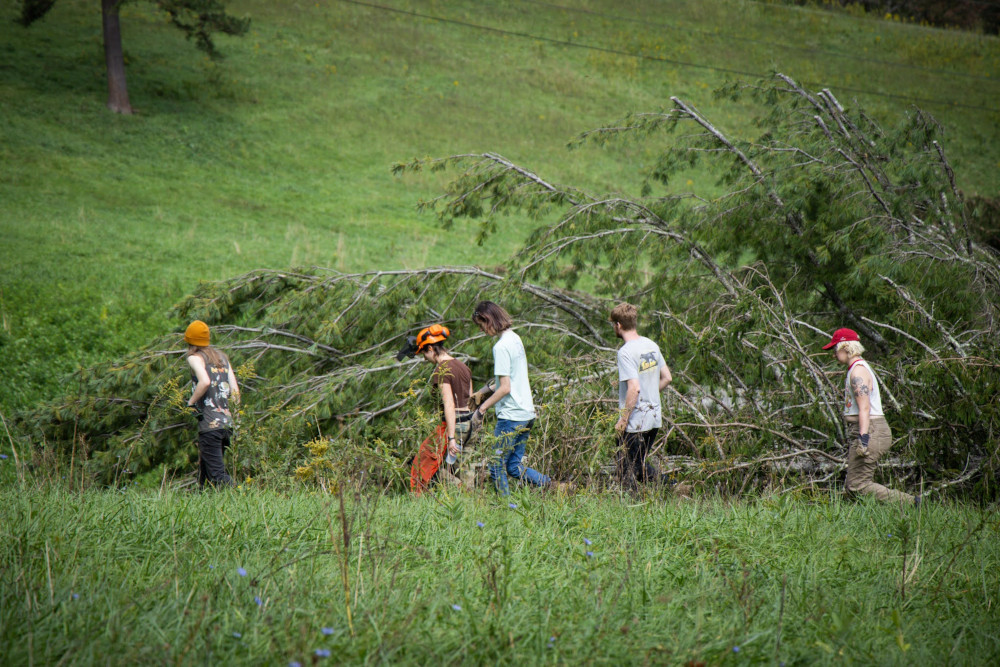
These young people have learned that real solutions exist to prevent this climate emergency. They know polluters should pay for these damages. But we are the ones paying for it now. I believe my students will be farmers, social workers, solar panel installers, health care workers and more — and help build a vibrant future. But it’s hard to cheerlead for that future when fossil fuel executives and government allies are profiting, rather than being held accountable for their harm.
It was a former student who alerted me on Instagram that an 800-square foot rental house I own a few miles away was teetering on a ravine. The post included a photo with this message: “Any Warren Wilson students! Searching for Mallory McDuff who owns this house. Someone needs to secure the house.”
On my modest salary, I don’t know how I’ll pay the mortgage and the expensive repairs without a tenant. But I’m charging my phone by running my car so I can deal with the insurance company, although no one I know has flood insurance. FEMA has helped so many, but won’t cover rentals, although it’s the only house I own. Many of the small houses on this block were submerged under water.
Even with this challenge, I know I am damn lucky to be alive, given the horrific losses.
Growing up on the Alabama coast, I remember driving through the damage wrought by Hurricane Camille, Frederick, and even Katrina. But I have few tools to comfort my own child — and my students — for the vast extent of this destruction. The only tool that works for me is working together and voting to protect the health of all in our community.
That is our collective power. As my friend and climate communications expert Anna Jane Joyner posted, “We — I — desperately need human stories that help us figure out how to be human in this world. To face this monumental unprecedented crisis.”
Each morning I wake up with my heart pounding, scared not for my small life but for life on Earth. But I will go to the next morning meeting with my students and show up for this world we cherish and call home.

Previously in The Revelator:
Building a Flock: How an Unlikely Birder Found Activism — and Community — in Nature

